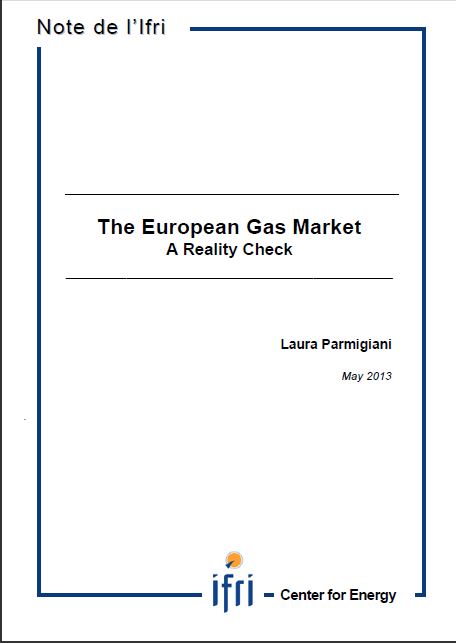The European Gas Market: A Reality Check

With the approach of the 2014 deadline for the completion of a truly European liberalized energy market, there is growing concern on the adequacy of the market structure with the changed economic and geopolitical environment. Market-based and short-term approaches have been fostered for both gas and electricity markets. Energy and climate policies have therefore a primary function in designing the basic rules for these markets to develop.
This study addresses two key issues related to the market design envisaged for the gas sector in Europe. The first raises questions about the adequacy of the market design proposed for the gas market with respect to security of supply. In fact, despite a higher dependence to external gas sources, the gas system has been developing all over Europe and it is becoming a key component of the European energy mix, in particular thanks to its back-up role for intermittent electricity generation and its lower content of CO2 emissions with respect to coal.
The external dimension of the gas market is thus taking a greater place in the approach to gas supply strategies. Security of supply is a key component in the gas sector and cannot be ignored in the creation of a European gas market. Moreover, the oligopolistic characteristic of the supply side has to be carefully assessed as it is well recognized that two countries (Norway and Russia) provide up to almost 60% of total external supplies. The study therefore investigates to what extent the gas market design and its implementation rules take into consideration this dimension.
It will be argued that the gas target model envisaged by regulators and the EC, by aiming at increasing the number of market exchanges based on market hubs or virtual exchange points, will not significantly contribute to security of supply. On the contrary, a greater concentration could be an undesired outcome of this process.
The second issue thus relates to the more practical on-going reforms that establish common rules at European internal cross-border interconnection points and their impacts for the actors of the value chain.
In order to understand the transformation started by the setting of these new rules, the study explores different cases. They aim at showing the evolution of the gas value chain and the impacts for the main actors.
The results of this work indicate that:
The oligopolistic nature of the European gas market has specific characteristics that need to be taken into account when constructing a market model, in particular:
- High reliance on external supply;
- Imbalance on the degree of access to the external supplier markets, which are less open to European companies, with the exception of Norway;
The process might foster concentration as new comers will not be able to compete with commercial companies owned by external producers or historical incumbents that are climbing the value chain upstream.
Although the Tariff network code under elaboration tries to cope with the problem of striking the right balance between short-term trades and long-term investments, in particular in infrastructures, the transformation favors short-term trades with a socialization of costs that might eventually be bore by final consumers (be them industrial or residential).
The process tries to harmonize rules and create ‘one-fit-for-all" measures that are not compatible with the various degrees of development of national markets. Regional approaches seem more realistic (as the the Prisma platform initiative among North West region with Austria and Italy shows).

Available in:
Regions and themes
ISBN / ISSN
Share
Download the full analysis
This page contains only a summary of our work. If you would like to have access to all the information from our research on the subject, you can download the full version in PDF format.
The European Gas Market: A Reality Check
Related centers and programs
Discover our other research centers and programsFind out more
Discover all our analysesBrazil One Year Away from the October 2026 General Elections
Brazil’s general elections will be held on October 4, 2026, to elect the president, vice-president, members of the National Congress, governors, deputy governors and state legislative assemblies. For the presidential and gubernatorial elections, a second round will be held on October 25 if no candidate obtains a majority of the votes in the first round.
COP30: An Inflection Point for Climate Action and Governance
The 30th Conference of the Parties (COP30), opening in Belém, Brazil, on November 10th 2025, convenes at a perilous moment.
The Strategic Dimension of Skills in the Clean Industrial Deal
In the competitiveness and energy transition battles, the European Union (EU) must master a determinant factor: skills.
The Energy Transition Faces Geopolitical Challenges. How Can Ideological Divides Be Overcome?
President Trump’s positions and policies, combined with record coal consumption and booming global electricity demand, geo-economic confrontation, and widespread concerns about energy security, are changing the game when it comes to understanding realistic decarbonization trajectories. The war in Europe is intensifying competition between defense and transition budgets. This is also the case elsewhere in the world.









